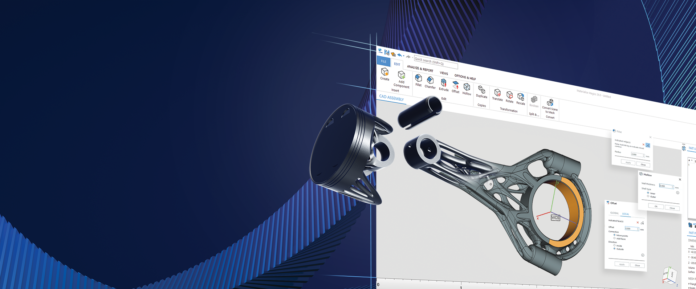Ever since it embedded native CAD workflows within Magics 26 thanks to Parasolid technology, software company Materialise has put CAD and MESH on the same pedestal – with the ambitious goal to provide users with the best of each technology.
With the latest version of Magics 26, the 3D printing company creates more possibilities to enable users to choose the optimal workflow for each 3D printing project. The main addition is a Part Scene in which users can edit CAD-based parts in addition to mesh-based Part and Platform Scenes for editing, fixing, analyzing and build preparation.
Users can choose their preferred workflow based on their 3D printing project requirements and edit their parts in mesh or in CAD format, Materialise recalls.
As a reminder, if you need to have a live demo of the latest Magics 26, Materialise will share further information on the software in the webinar, What’s New in Magics 26 — The Best of CAD and Mesh.
In the meantime, we can already say that the new CAD-workflow for part editing supports users with projects that demand a close alignment or frequent exchange between design and data preparation. Editing and saving their parts in a CAD-native format enables Magics users to maintain part integrity and to use cleaner, high-resolution CAD-files. This helps to reduce time between design iterations and improves stability and repeatability by preventing errors that may occur in transitions between file types. The CAD-workflow allows users to adapt and edit parts up to the point when they are optimized and ready for 3D printing before switching to build preparation, a press release reads.
“With Magics 26, I can easily modify CAD-models without having to go back to a CAD-design software,” said Astrid Dejosé, Designer Additive Manufacturing at Sirris. “It is so much more efficient to stay in Magics 26 without the need to switch between applications.”
Furthermore, new mesh capabilities that come with the latest Magics 26 include improved support generation and advanced automated nesting. These improvements help to lower the scrap rate and increase productivity.
Moreover, those who would like to refine the stability of prints can enhance flexible cone and tree supports with braces. According to Materialise, the advanced automated nesting enables a higher part density and offers the option to generate supports between parts when producing with Electron Beam Melting (EBM) and Binder Jetting. The supports improve heat dissipation to decrease warping and prevent parts from fusing together during the printing process.
For further information on this topic, we recently discussed: Why the road to file preparation for 3D printing can be confusing with CAD and/or Mesh.
The announcement follows the recent release of CO-AM, a software platform built on the company’s acquisition of Link3D that would enable organizations to scale-up their operations for serial production and mass customization.
Remember, you can post job opportunities in the AM Industry on 3D ADEPT Media free of charge or look for a job via our job board. Make sure to follow us on our social networks and subscribe to our weekly newsletter : Facebook, Twitter, LinkedIn & Instagram ! If you want to be featured in the next issue of our digital magazine or if you hear a story that needs to be heard, make sure to send it to contact@3dadept.com






